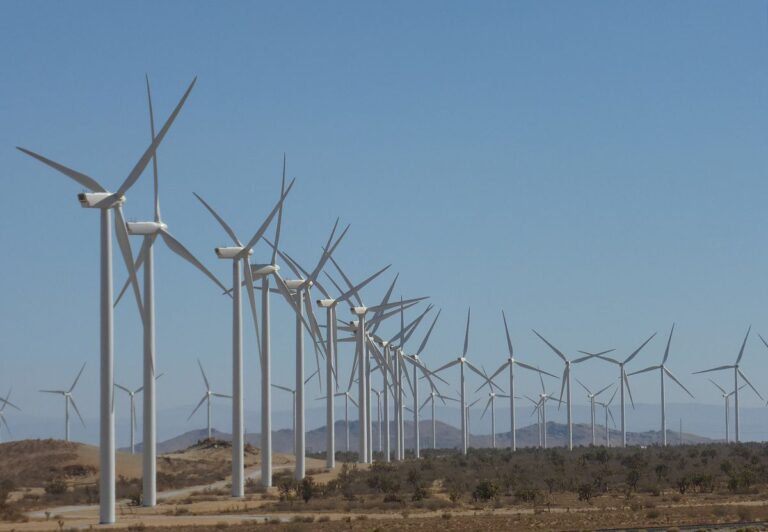Wind power has become one of the leading sources of clean energy around the world. Countries are building massive wind farms to reduce reliance on fossil fuels and meet growing energy needs.
Some wind farms now span hundreds of square miles and power millions of homes.
The list below highlights the 13 largest wind farms in the world based on total capacity.
1. Gansu Wind Farm

| Location | Gansu Province, China |
|---|---|
| Capacity | Over 7,000 MW (target 20,000 MW) |
| Type | Onshore |
| Status | Partially operational, ongoing expansion |
| Operator | Multiple state-owned companies |
Gansu Wind Farm stands as the largest wind power project on Earth. It sits in the arid desert lands of Gansu Province, located in northern China. The site spans over miles of open land, taking full advantage of consistent wind patterns across the region.
The installed capacity has already crossed 7,000 megawatts. China plans to push that figure up to 20,000 megawatts once the entire project reaches completion. That amount of power can serve millions of households. Construction started in 2009 and continues in phases. Each new stage brings in more turbines and more regional grid integration.
The project forms a central part of China’s renewable energy policy. Gansu reflects China’s focus on inland wind development, far away from dense urban areas. However, transmission has remained one of the biggest challenges. Much of the energy produced often stays unused due to lack of grid connection.
2. Jiuquan Wind Power Base
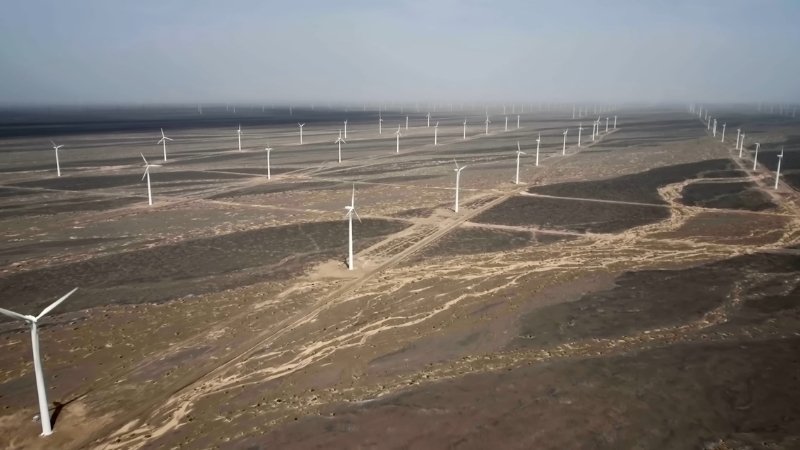
| Location | Jiuquan, Gansu Province, China |
|---|---|
| Capacity | Over 6,000 MW (part of 20,000 MW plan) |
| Type | Onshore |
| Status | Operational, further phases in development |
| Operator | Multiple Chinese energy firms |
Jiuquan Wind Power Base often overlaps with the larger Gansu Wind Farm label. Still, it deserves its own place as a massive structured cluster of wind projects in Jiuquan, a city in the same province. The wind base was developed with a long-term target of 20,000 megawatts, with over 6,000 megawatts already installed and operational.
The Chinese government labeled it as one of its key “mega-bases” for wind energy. Jiuquan benefits from stable wind flows and wide open land. Early phases focused on quick turbine installation. Later stages added transmission infrastructure and interconnection plans to improve efficiency.
Grid congestion has slowed energy delivery in some cases. Despite that, the wind base continues to expand. National authorities remain committed to solving those transmission issues and improving utilization rates.
3. Alta Wind Energy Center
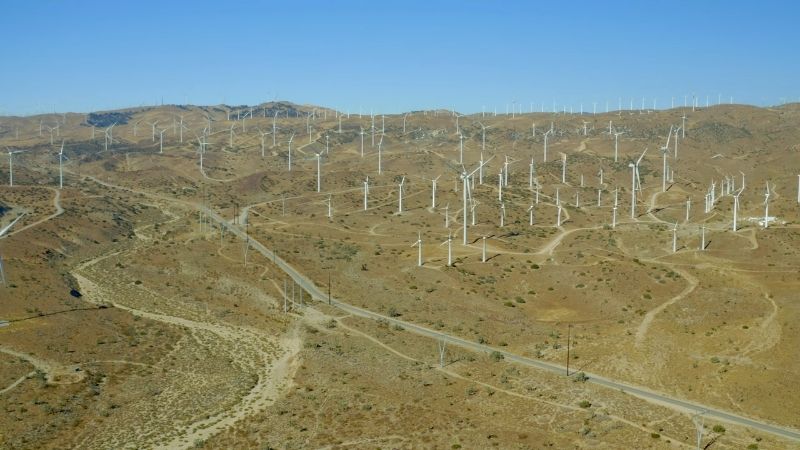
| Location | Tehachapi, California, United States |
|---|---|
| Capacity | Around 1,550 MW |
| Type | Onshore |
| Status | Fully operational |
| Operator | Terra-Gen Power |
Alta Wind Energy Center holds the title for the largest wind farm in the United States. It sits in the windy Tehachapi Pass region of California. The site stretches across hills and open lands designed to capture strong desert winds flowing through the pass.
The total capacity stands at around 1,550 megawatts. That amount of energy can support over 450,000 homes. Construction began in 2010, and multiple phases were completed in rapid succession. The project helped launch California’s wider push toward renewable targets.
Alta plays a key role in the Tehachapi Renewable Transmission Project. It delivers electricity across the state and connects to other renewable sources. The farm uses modern turbine models and remains a benchmark for wind energy development in the United States.
4. Muppandal Wind Farm

| Location | Tamil Nadu, India |
|---|---|
| Capacity | Around 1,500 MW |
| Type | Onshore |
| Status | Fully operational |
| Operator | Multiple public and private firms |
Muppandal Wind Farm is the largest wind energy project in India. It lies in Tamil Nadu, a state with some of the best wind conditions in the country. The site uses the strong seasonal winds that pass through the Western Ghats.
The capacity has reached about 1,500 megawatts. That energy supports hundreds of thousands of homes and businesses. Both public and private sector companies have invested in turbines throughout the area. It is not a single project, but a cluster of wind farms grouped together across the region.
Muppandal’s growth started decades ago. Government incentives encouraged private participation early on. The success of Muppandal shaped India’s wider wind policies and encouraged other states to follow a similar model.
5. Jaisalmer Wind Park
| Location | Rajasthan, India |
|---|---|
| Capacity | Around 1,600 MW |
| Type | Onshore |
| Status | Fully operational |
| Operator | Suzlon Energy and others |
Jaisalmer Wind Park ranks among the largest wind farms in Asia. Located in the desert region of Rajasthan, it spreads across a wide expanse of dry, flat terrain where wind conditions remain ideal for most of the year.
The site has reached a capacity of around 1,600 megawatts. Multiple phases of development helped it expand over time. The project includes a variety of turbine types, primarily developed by Suzlon, an Indian wind energy company.
Jaisalmer benefits from state-level support, land availability, and favorable weather patterns. It also connects well to India’s northern transmission network, which supports clean energy delivery across states.
6. Markbygden Wind Farm
| Location | Norrbotten County, Sweden |
|---|---|
| Capacity | Target 4,000 MW (over 1,000 MW operational) |
| Type | Onshore |
| Status | Partially operational, under construction |
| Operator | Svevind, Enercon, and others |
Markbygden Wind Farm is the largest planned wind power project in Europe. It covers a vast stretch of land in northern Sweden, near the Arctic Circle. The full project aims for a total capacity of 4,000 megawatts. Over 1,000 megawatts are already active.
Construction has been divided into multiple phases. Each phase includes dozens of turbines placed across forests, hills, and flat terrain. The region offers steady wind conditions and minimal population density, which allows for massive turbine installations without urban interference.
Sweden’s commitment to clean energy has supported this project through stable policies and international investment. German firms have played a large role in development and turbine supply. Once completed, the wind farm could supply power to over 1.5 million homes.
7. Hornsea One
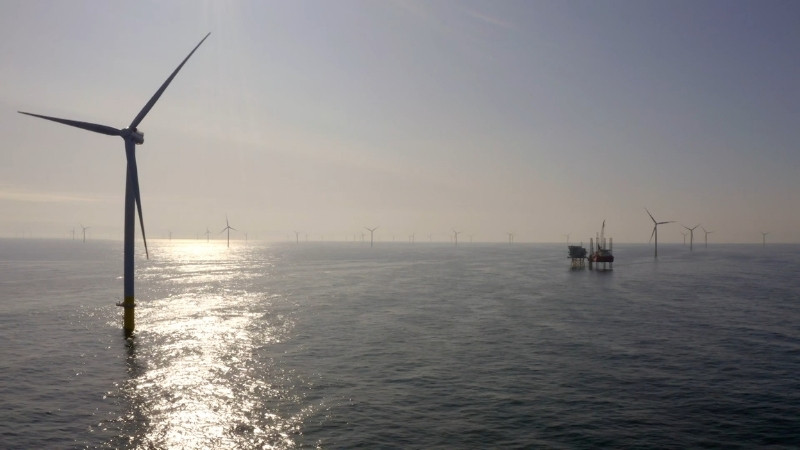
| Location | North Sea, United Kingdom |
|---|---|
| Capacity | 1,218 MW |
| Type | Offshore |
| Status | Fully operational |
| Operator | Ørsted |
Hornsea One is the largest offshore wind farm in the world. It lies off the Yorkshire coast in the North Sea. The project includes 174 turbines spread across more than 400 square kilometers of ocean.
Each turbine stands over 100 meters tall and can deliver more than 7 megawatts of power. The total output reaches 1,218 megawatts. That is enough to supply over one million homes in the United Kingdom.
The site took several years to complete. Installation in deep, windy waters required advanced marine engineering and specialized ships. The location benefits from strong sea winds and stable marine conditions throughout the year.
8. Shepherds Flat Wind Farm
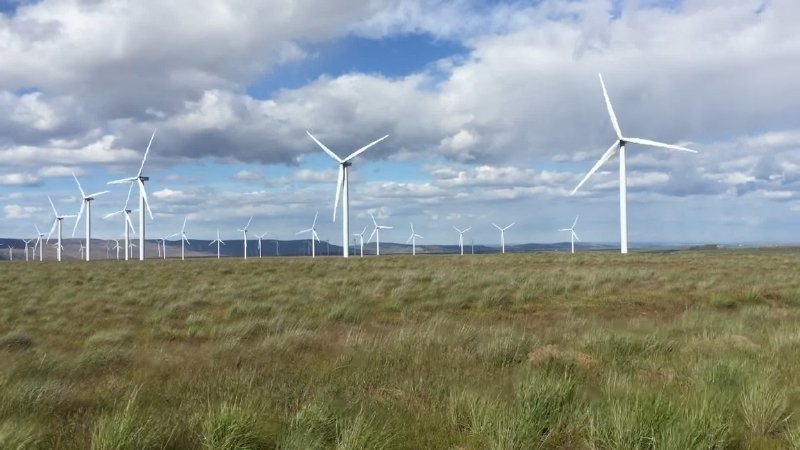
| Location | Oregon, United States |
|---|---|
| Capacity | 845 MW |
| Type | Onshore |
| Status | Fully operational |
| Operator | Caithness Energy |
Shepherds Flat Wind Farm is one of the most significant onshore wind projects in the United States. Located near Arlington, Oregon, it covers about 30 square miles of open terrain. The site takes advantage of strong wind currents flowing through the Columbia River Gorge.
With a capacity of 845 megawatts, Shepherds Flat can power about 235,000 homes. The farm uses over 300 turbines developed by GE. Construction finished in 2012 and marked a major step in U.S. wind investment during that period.
The project received support from federal loan guarantees and major private investors, including Google. Its success helped show that large-scale clean energy could attract commercial interest in the United States.
9. Roscoe Wind Farm
| Location | Texas, United States |
|---|---|
| Capacity | 781 MW |
| Type | Onshore |
| Status | Fully operational |
| Operator | E.ON Climate and Renewables |
Roscoe Wind Farm was once the largest wind farm in the world. Located in west-central Texas, it spans over 100,000 acres of farmland. The project includes nearly 630 turbines, grouped into four major development phases.
The total capacity stands at 781 megawatts. That output can support the energy needs of around 250,000 average homes. Farmers lease their land to support turbine installation, which has allowed both energy production and agriculture to exist side by side.
Texas offers ideal wind conditions and strong state-level backing for clean energy. Roscoe took advantage of both to become a flagship example of how rural land can support large-scale renewable projects.
10. Horse Hollow Wind Energy Center
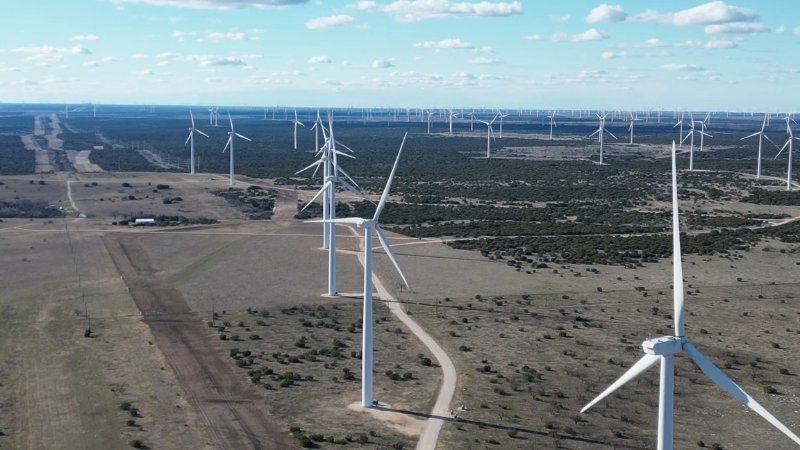
| Location | Texas, United States |
|---|---|
| Capacity | 735 MW |
| Type | Onshore |
| Status | Fully operational |
| Operator | NextEra Energy Resources |
Horse Hollow Wind Energy Center is another major wind project in Texas. It covers over 47,000 acres in Taylor and Nolan counties. With a capacity of 735 megawatts, it ranks among the largest onshore wind farms in the United States.
The project includes over 400 turbines placed across open grasslands and rolling hills. Strong west Texas winds offer a stable power source throughout the year. The farm became fully operational in 2006 and has played a major role in Texas’ energy mix ever since.
Horse Hollow also set a precedent for legal recognition of wind energy rights. It was the subject of one of the first court cases dealing with noise and visual complaints against wind farms. The project prevailed in court, helping establish legal stability for future wind projects in the region.
11. Walney Extension Offshore Wind Farm
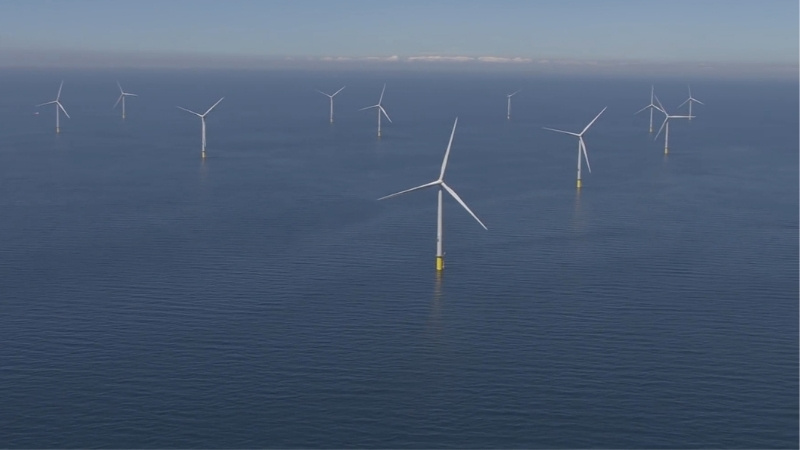
| Location | Irish Sea, United Kingdom |
|---|---|
| Capacity | 659 MW |
| Type | Offshore |
| Status | Fully operational |
| Operator | Ørsted |
Walney Extension held the title of the largest offshore wind farm before Hornsea One surpassed it. Located in the Irish Sea near the coast of Cumbria, it combines two offshore sections into one large project.
The wind farm includes 87 turbines from two manufacturers: Siemens and MHI Vestas. Each turbine stands on fixed-bottom foundations placed in deep waters with strong wind conditions. The total capacity reaches 659 megawatts, enough to power over 600,000 homes.
The project was completed in 2018 and received major investment support from Danish, Swedish, and British energy groups. Its success led to increased focus on offshore expansion across the United Kingdom.
12. Capricorn Ridge Wind Farm
| Location | Texas, United States |
|---|---|
| Capacity | 662 MW |
| Type | Onshore |
| Status | Fully operational |
| Operator | NextEra Energy Resources |
Capricorn Ridge Wind Farm lies in central Texas, spread across Sterling and Coke counties. The project delivers 662 megawatts of clean electricity, placing it among the largest wind farms in the United States.
The site includes over 340 turbines built in two main phases. Construction finished in the early 2010s. The farm powers nearly 220,000 homes. It also contributes to regional grid stability and plays a role in Texas’ overall clean energy strategy.
Capricorn Ridge was one of the first large-scale wind projects in the U.S. to include a greenhouse gas reduction estimate in its planning. It reduces over 900,000 tons of carbon emissions annually compared to fossil fuel use.
13. Lake Turkana Wind Power Station
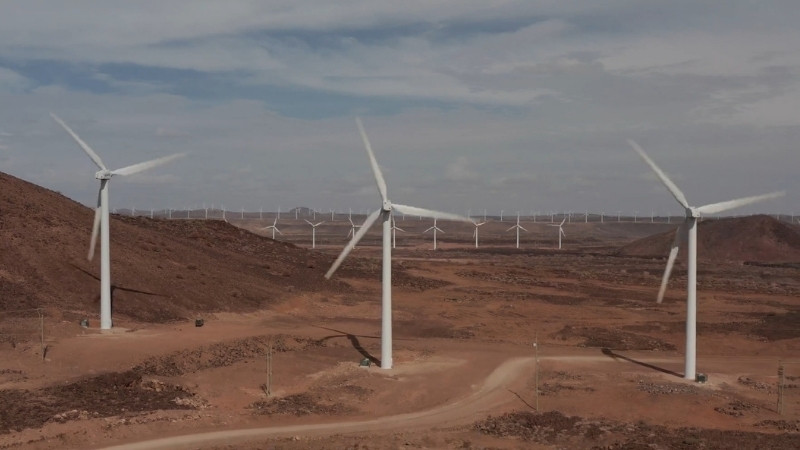
| Location | Loiyangalani, Kenya |
|---|---|
| Capacity | 310 MW |
| Type | Onshore |
| Status | Fully operational |
| Operator | Lake Turkana Wind Power Ltd |
Lake Turkana Wind Power Station is the largest wind farm in Africa. It sits in a remote part of northern Kenya, near the eastern shores of Lake Turkana. Strong, consistent wind currents sweep through the valley and make the area ideal for wind energy.
The project includes 365 turbines that deliver 310 megawatts of power. That is about 15 percent of Kenya’s total energy needs. The project was completed in 2019 and became a landmark for large-scale renewable energy in Africa.
Lake Turkana faced major logistical challenges. Developers had to build hundreds of miles of access roads and transmission lines in rugged terrain. Despite that, it was completed on budget and within the planned timeframe.
FAQs
How do wind farms store the electricity they produce?
Wind farms do not store electricity directly. The power generated flows into the local or national grid. If storage is needed, separate battery storage systems or pumped hydro stations are used. Most large wind farms rely on real-time grid distribution.
What happens to wind turbines after their lifespan ends?
Most wind turbines last 20 to 25 years. After that, they are either upgraded or decommissioned. Some components like steel towers and copper wiring can be recycled. Blades are harder to recycle but newer methods and materials are making blade disposal more sustainable.
Do large wind farms affect local wildlife or birds?
Large wind farms can affect birds and bats, especially during migration. Developers conduct environmental impact assessments to reduce risk. Turbines are spaced and placed based on wind flow and wildlife data. Newer designs aim to reduce harm with better monitoring systems.
How much land does a large wind farm usually cover?
A large onshore wind farm can spread across tens of thousands of acres. For example, Roscoe Wind Farm covers over 100,000 acres. However, turbines only occupy a small part of that land. Most of the area remains usable for farming or other local activities.
Bottom Line
The largest wind farms in the world show how serious countries have become about clean energy at scale. Each project reflects years of planning, strong investment, and smart use of natural wind corridors. From deserts in India to offshore zones in Europe and plains in the United States, these farms turn wind into real power for millions.
Size alone does not define success. Grid access, local impact, and long-term performance all matter. Projects like Gansu, Alta, and Hornsea One set the pace for future development. They also prove that wind power is not experimental. It is already a major force in the global energy mix.

